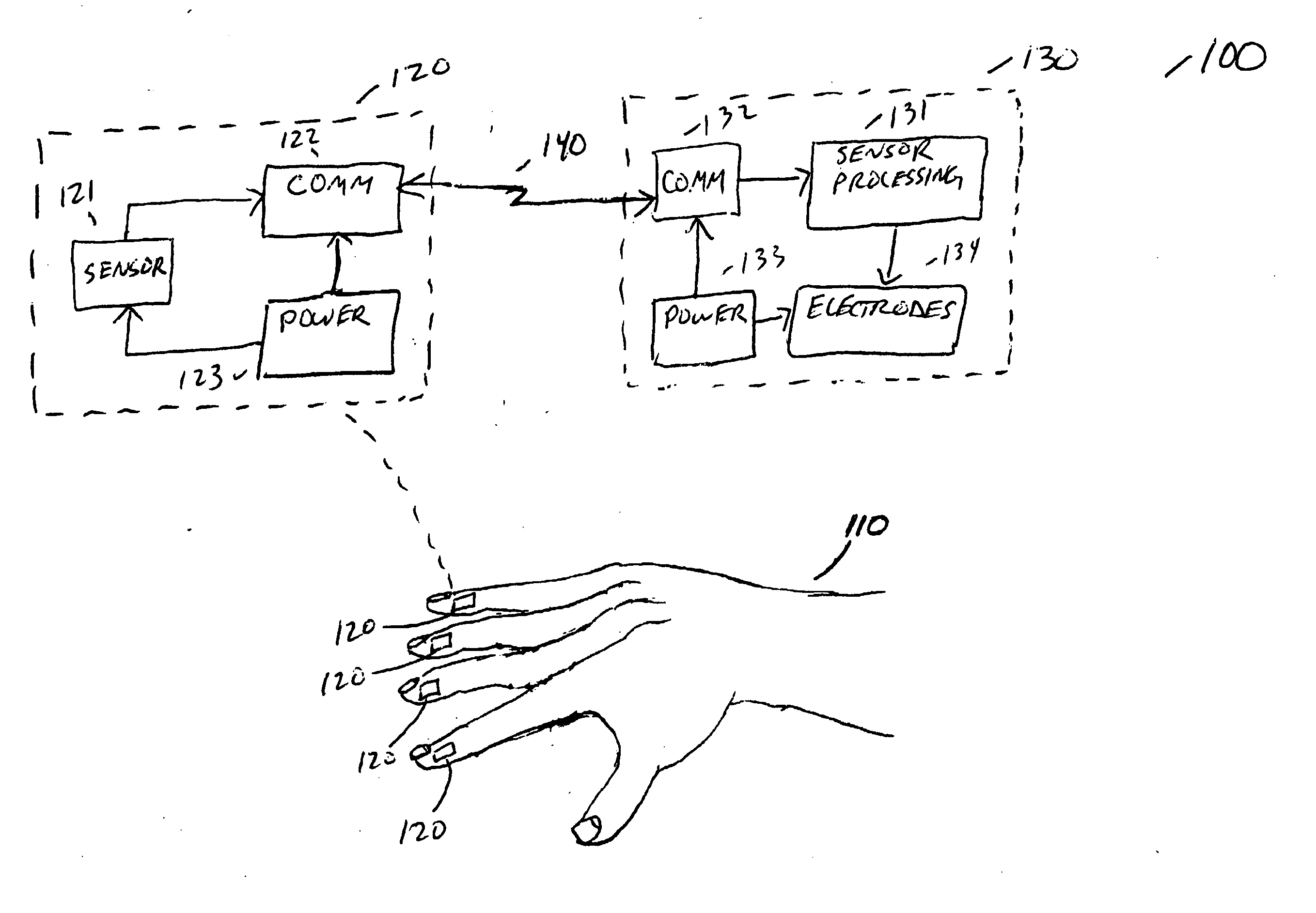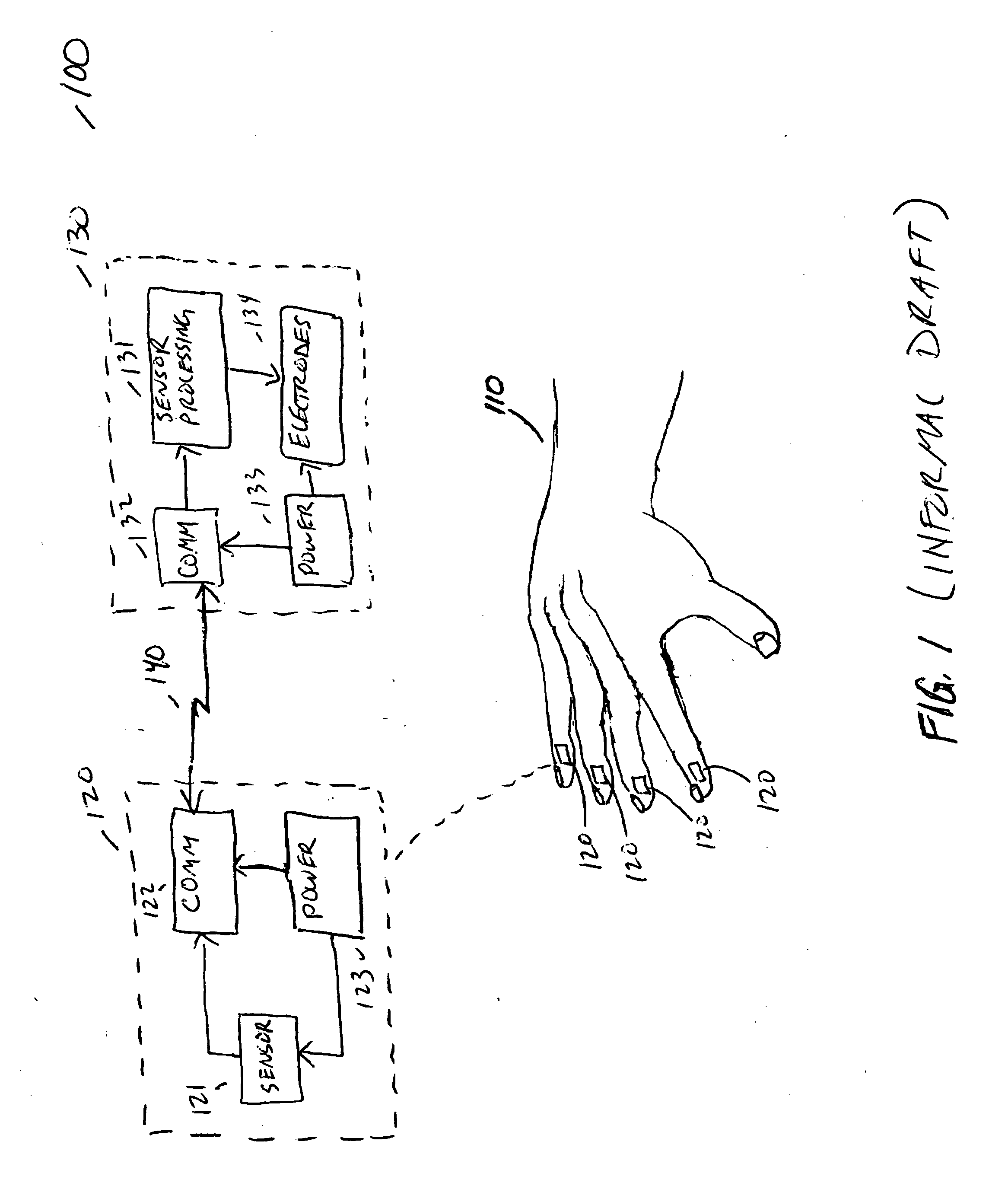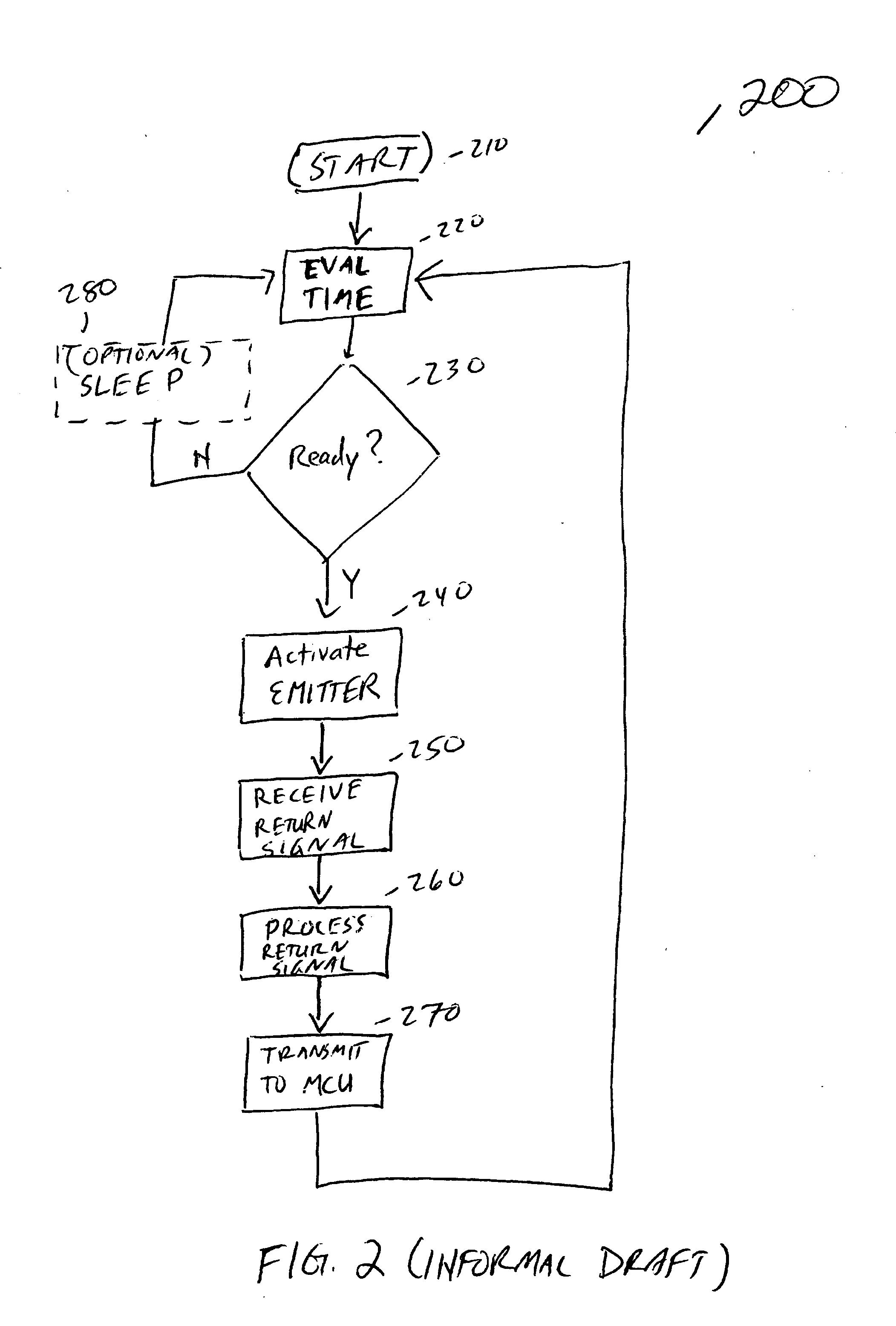Neural prosthetic with touch-like sensing
a technology of touch-like sensing and prosthetics, applied in the field of prosthetic devices, can solve the problems of complete blindness, loss of central vision, affecting the ability of people to read and perform visually demanding tasks,
- Summary
- Abstract
- Description
- Claims
- Application Information
AI Technical Summary
Problems solved by technology
Method used
Image
Examples
example process
Flow
[0031]FIG. 2 illustrates an example process flow (200) for another neural prosthetic device. Process flow 200 may be implemented as software that is stored in a memory device (e.g., a read only memory), as a programmable logic device (PLD), as a digital logic circuit, as operations that are handled by a controller, or any other appropriate mechanism as will become apparent from the present disclosure. Processing begins at block 210, and proceeds to block 220.
[0032] At block 220, time is evaluated to determine if an appropriate time has elapsed for activating an emitter. Processing flows from decision block 230 to block 240 when sufficient time has elapsed to begin emitting. Alternatively, processing returns from decision block 230 to block 220 when insufficient time has elapsed to begin emitting a signal. Optional block 280 may be used to place the device in a suspended operating mode (e.g., sleep, conserve power, suspend, etc.) as may be needed.
[0033] At block 240 the emitter...
PUM
 Login to View More
Login to View More Abstract
Description
Claims
Application Information
 Login to View More
Login to View More - R&D
- Intellectual Property
- Life Sciences
- Materials
- Tech Scout
- Unparalleled Data Quality
- Higher Quality Content
- 60% Fewer Hallucinations
Browse by: Latest US Patents, China's latest patents, Technical Efficacy Thesaurus, Application Domain, Technology Topic, Popular Technical Reports.
© 2025 PatSnap. All rights reserved.Legal|Privacy policy|Modern Slavery Act Transparency Statement|Sitemap|About US| Contact US: help@patsnap.com



